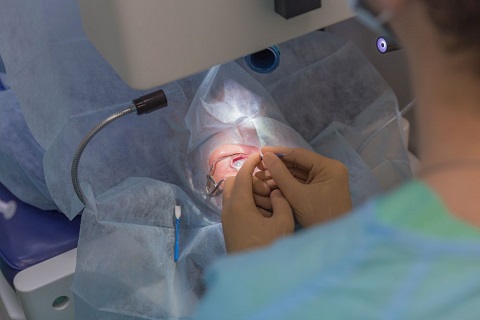
Worldwide, over 624 million people are suffering from vision impairment due to refractive error. When left uncorrected, this condition can worsen and affect a person’s ability to function optimally and engage in activities of daily living. Thanks to modern technology, refractive error can now be treated by using wearable lenses or through surgery.
Although eyeglasses and contact lenses are effective in correcting the main types of refractive error—myopia, hyperopia, and presbyopia—a lot of people these days are preferring surgery, particularly laser-assisted in situ keratomileusis (LASIK), and for a plethora of good reasons. Apart from being a quick procedure (lasting about 30 minutes or less), LASIK promises guaranteed results. It is also not invasive, which is why it can be done using minimal anesthesia with conscious sedation.

How Does LASIK Work?
Unlike other types of surgery that consist of multiple steps, LASIK only involves two—flap creation and corneal reshaping. Of course, prior to surgery, a comprehensive exam will be performed by the eye doctor to determine if the patient is a candidate for surgery and if certain risks factors have to be managed. Once the patient’s suitability is established, the surgery will be scheduled.
- Flap Creation. A suction device will be placed in the eye to prevent it from closing. Then the surgeon will use a microkeratome to create the corneal flap. This flap will be carefully flipped to expose the inner layers of the eye that need reshaping.
- Corneal Reshaping. A laser apparatus will be placed on the patient’s eye and directed to the area where the inner layers are exposed. The patient will be asked to look directly at the light to ensure accurate targeting of tissues. When the laser is started, controlled light will target tissues that must be ablated. This step usually lasts for 60 seconds but the treatment time varies among patients. Afterwards, the flap will be flipped back to close off the exposed area of the eye and a shield will be placed to prevent anything from making contact with the eye.
Post-Operative Treatment
The most important thing patients should remember is to not rub their eyes under any circumstances. This is to prevent the flap from reopening and the underlying layers from being damaged and contaminated. The eyes will feel irritated, burning, itchy, and frequently water or tear, but this will eventually stop. The most effective way to hasten recovery is to rest the eyes by closing.
If you are looking to undergo laser vision correction in Los Angeles soon, it is crucial to find an eye clinic that specializes in this procedure, such as Excel Eye. This way you can be sure that you are in good hands and that all necessary examinations will be carried out before you lie on the operating table.



